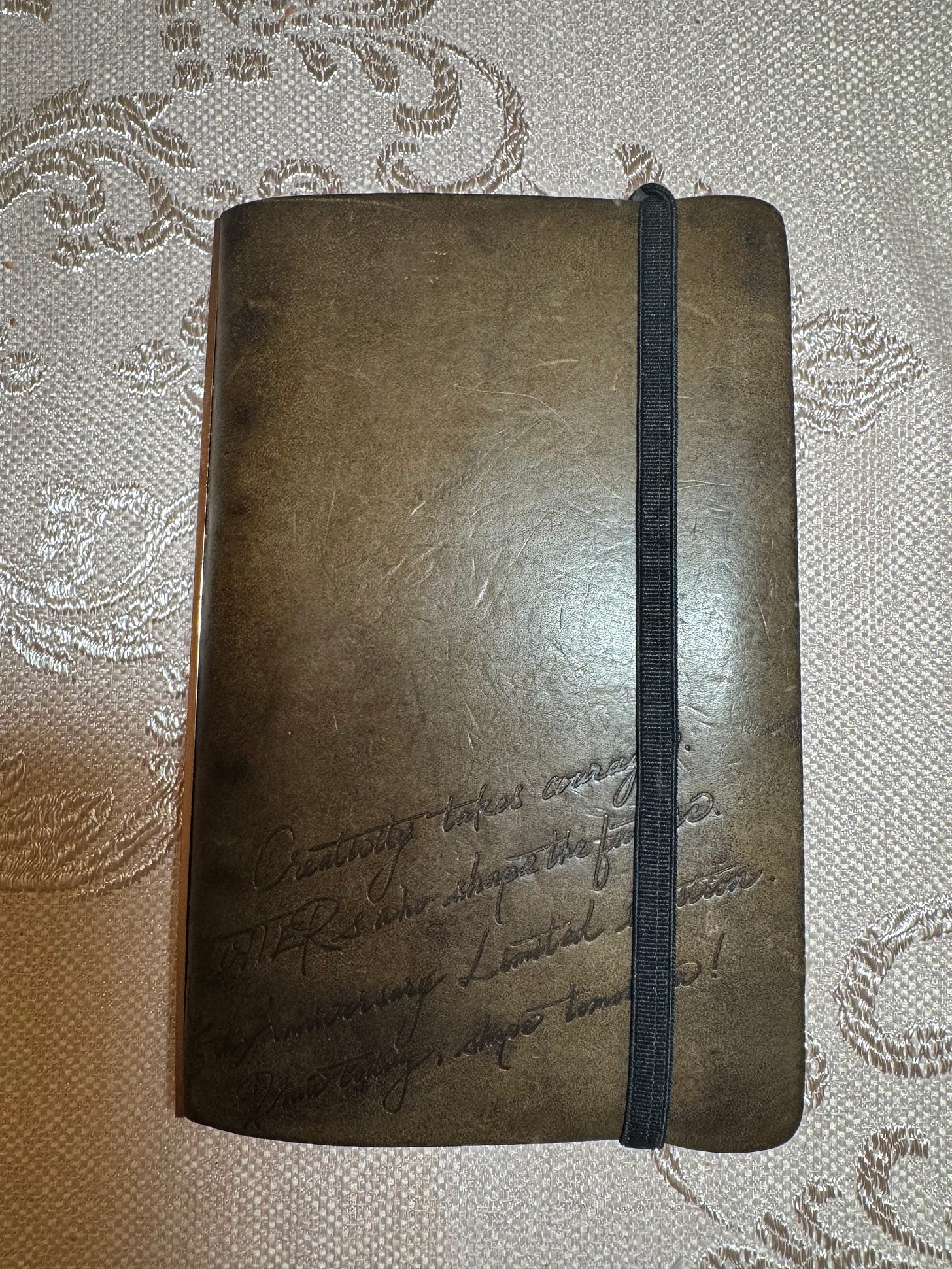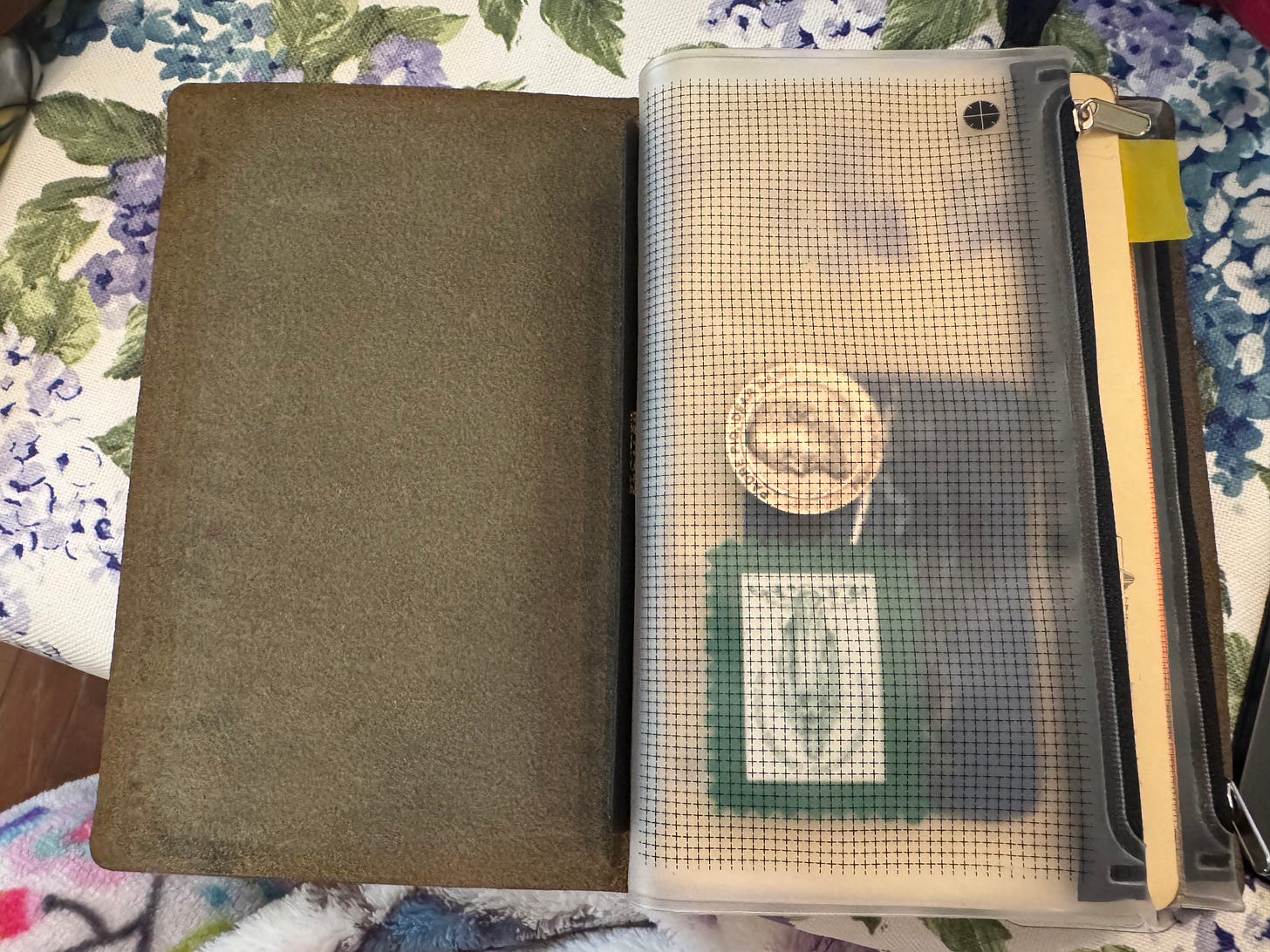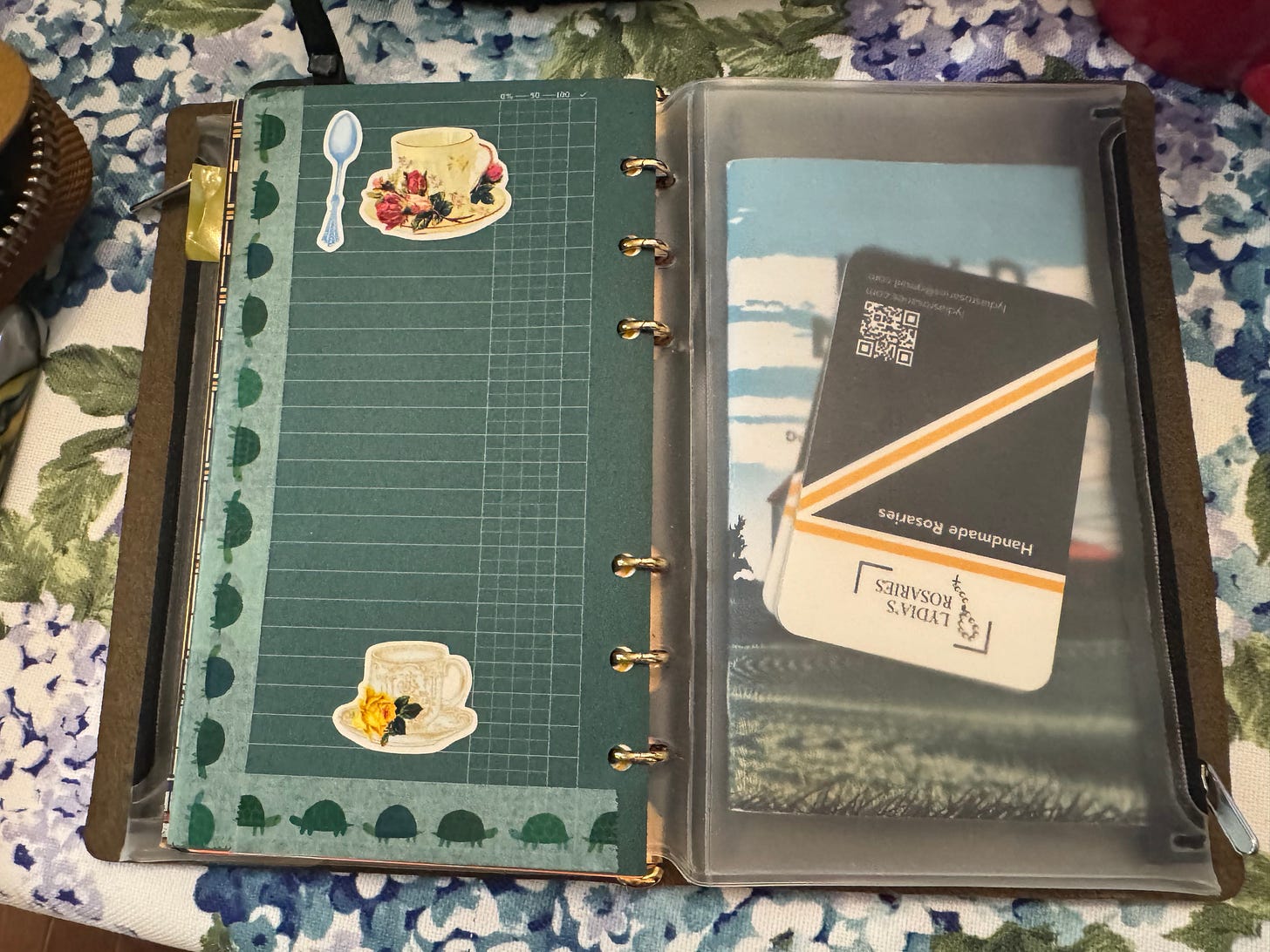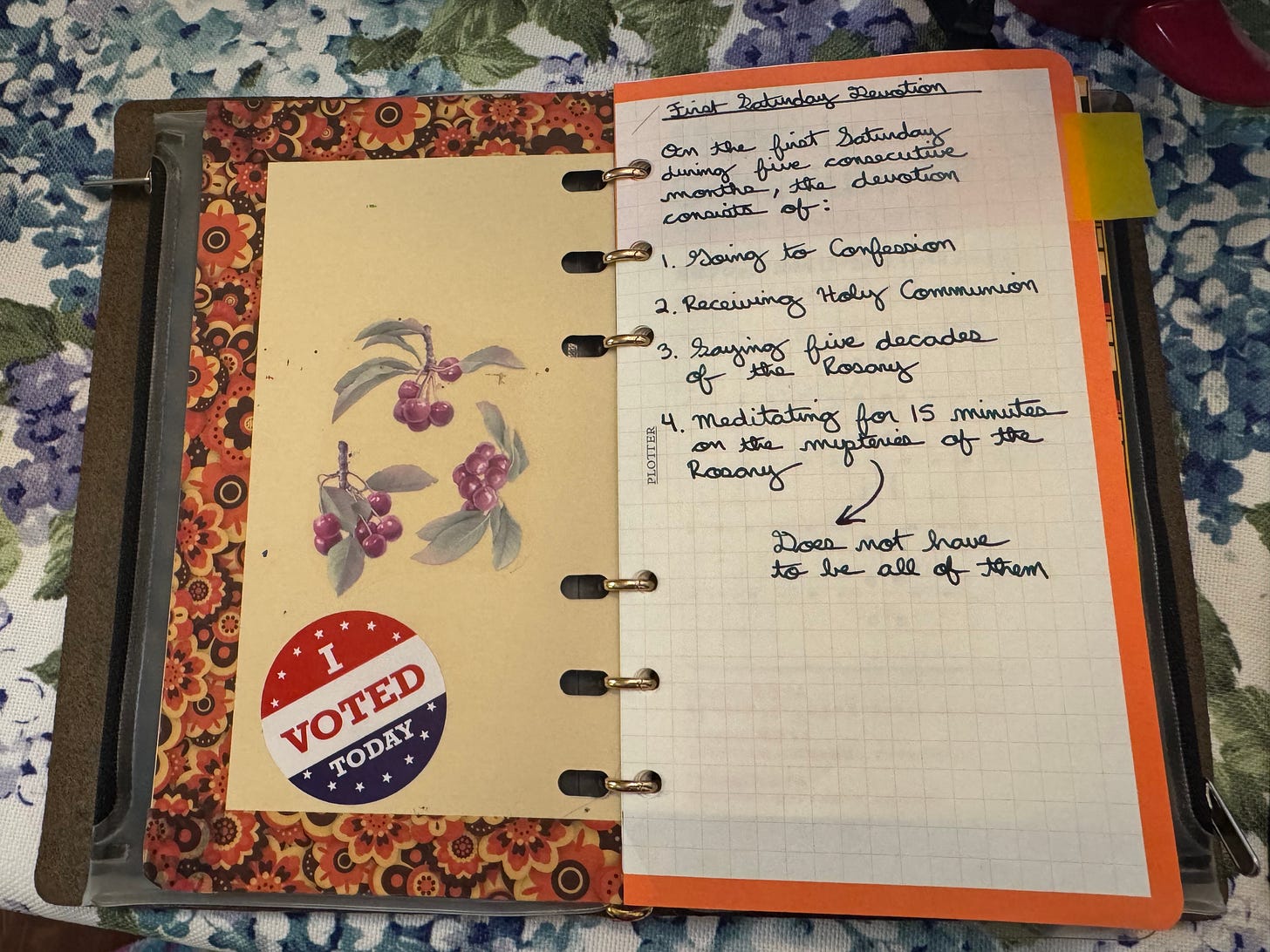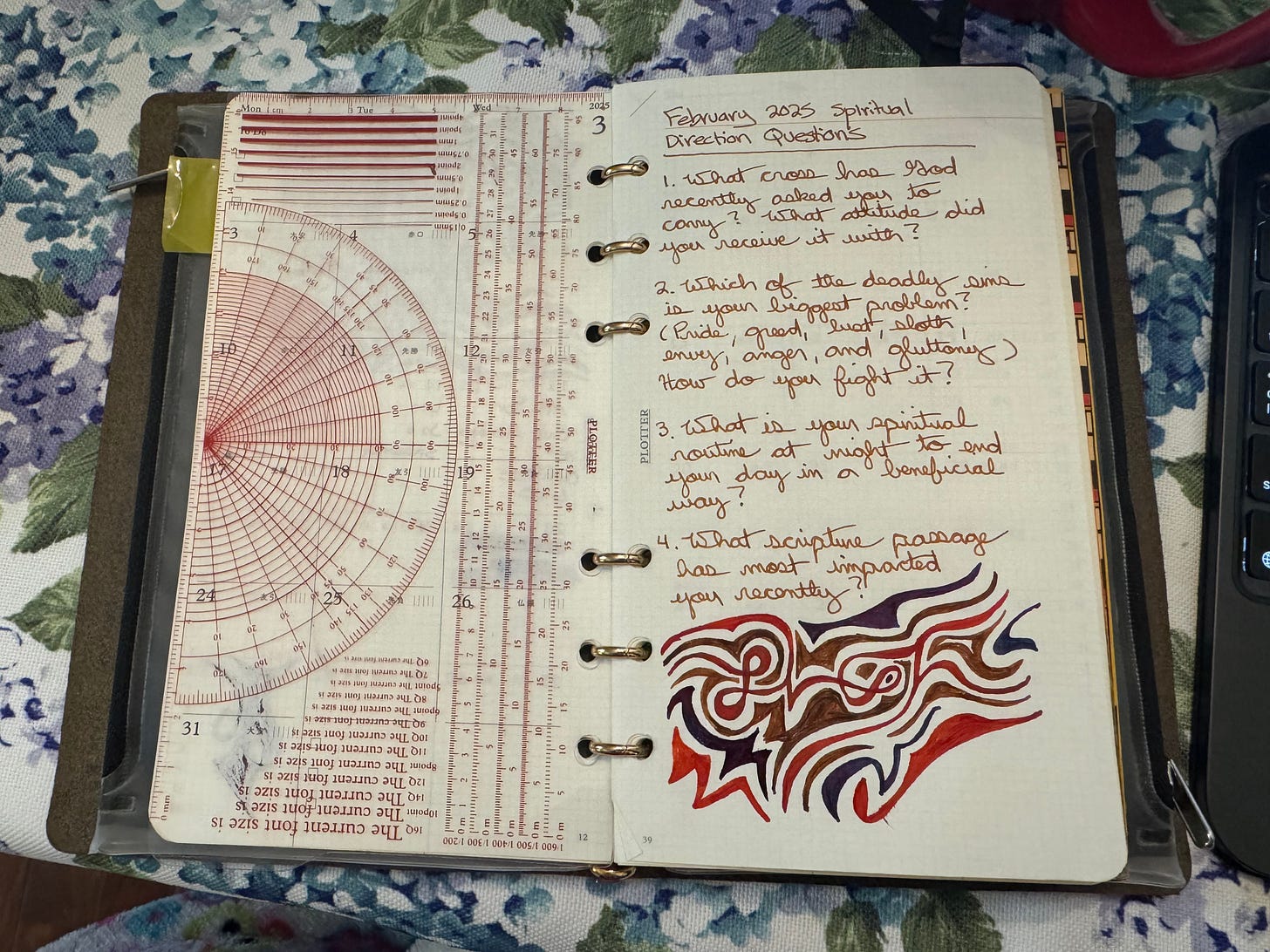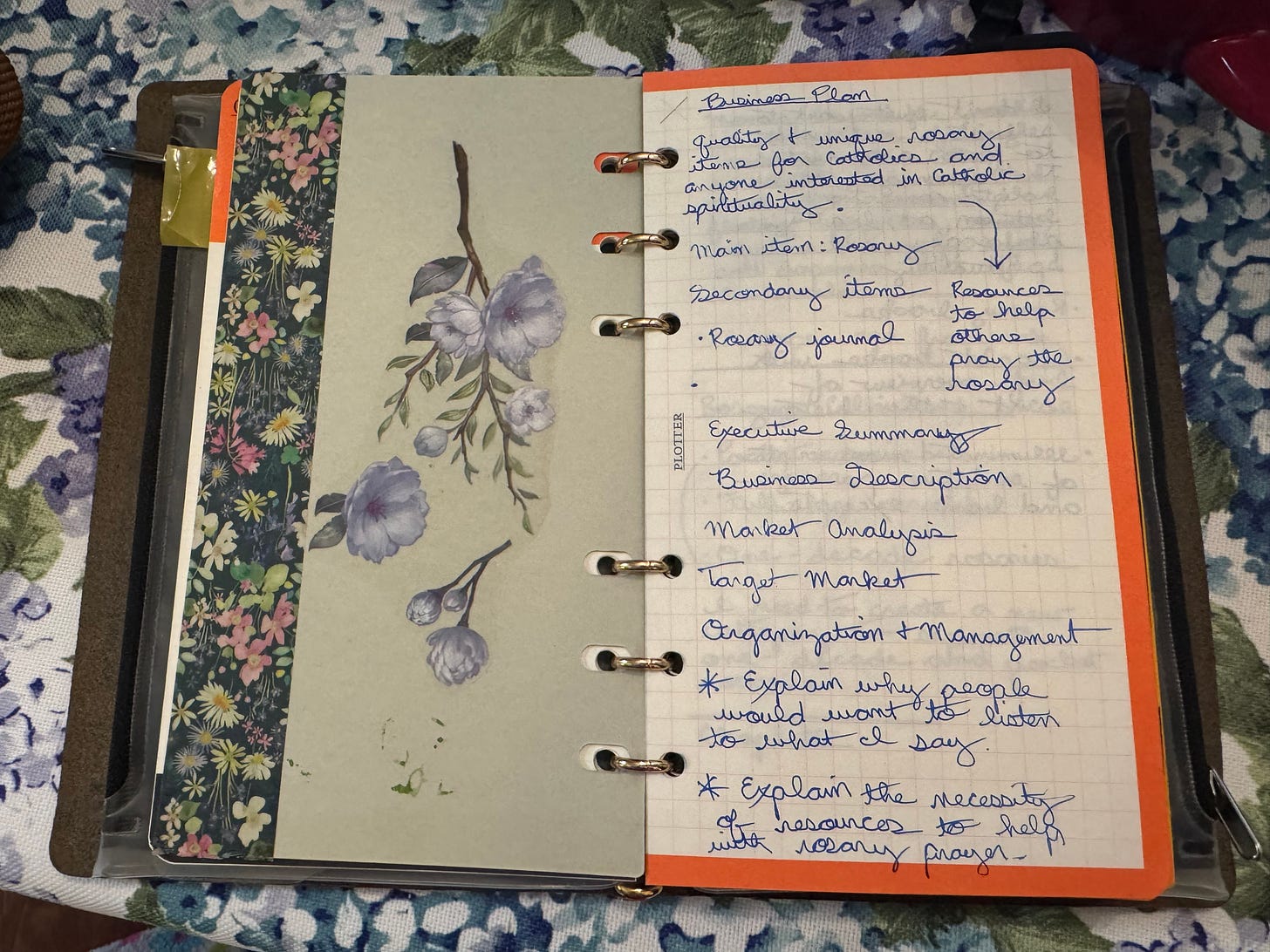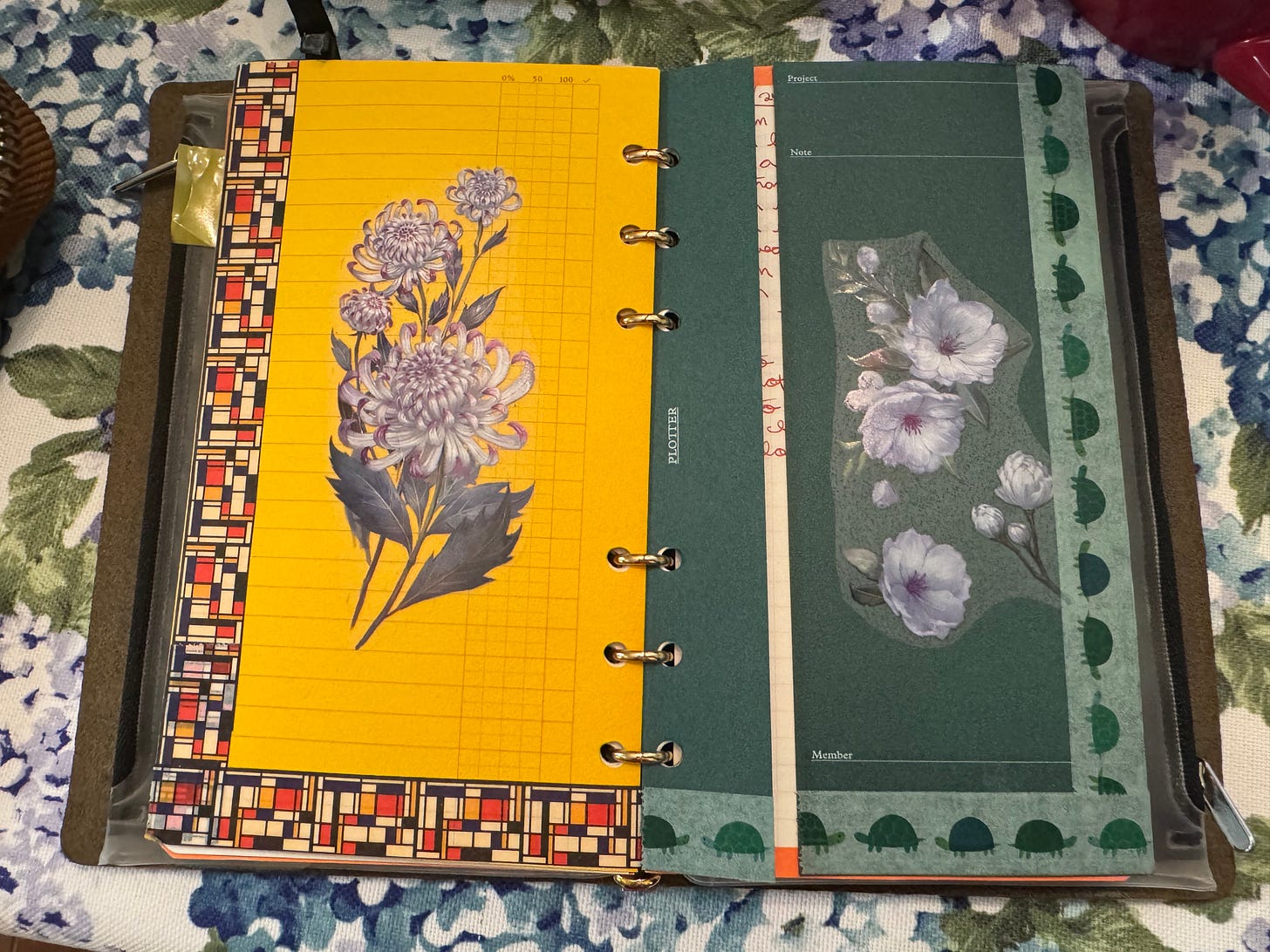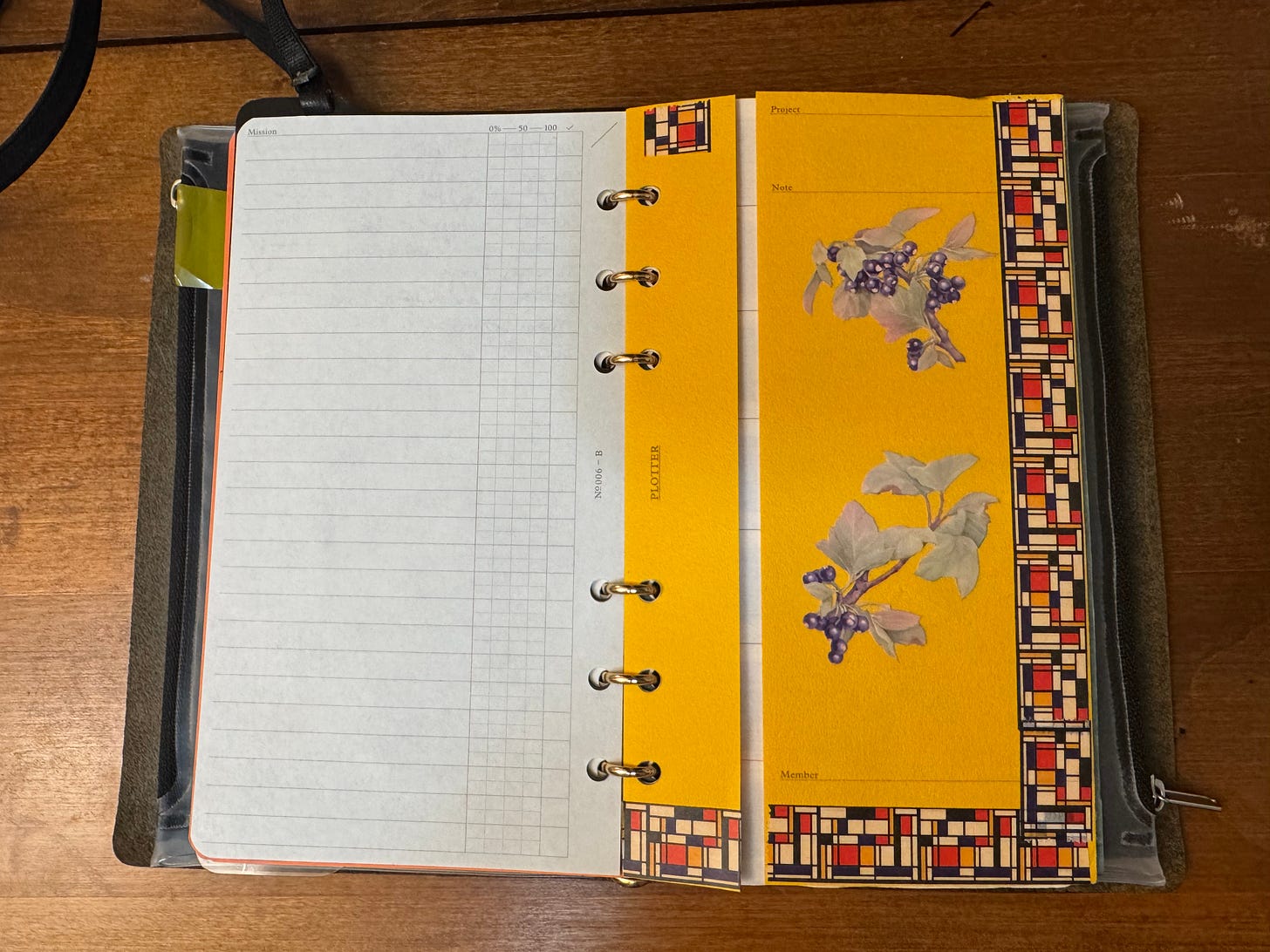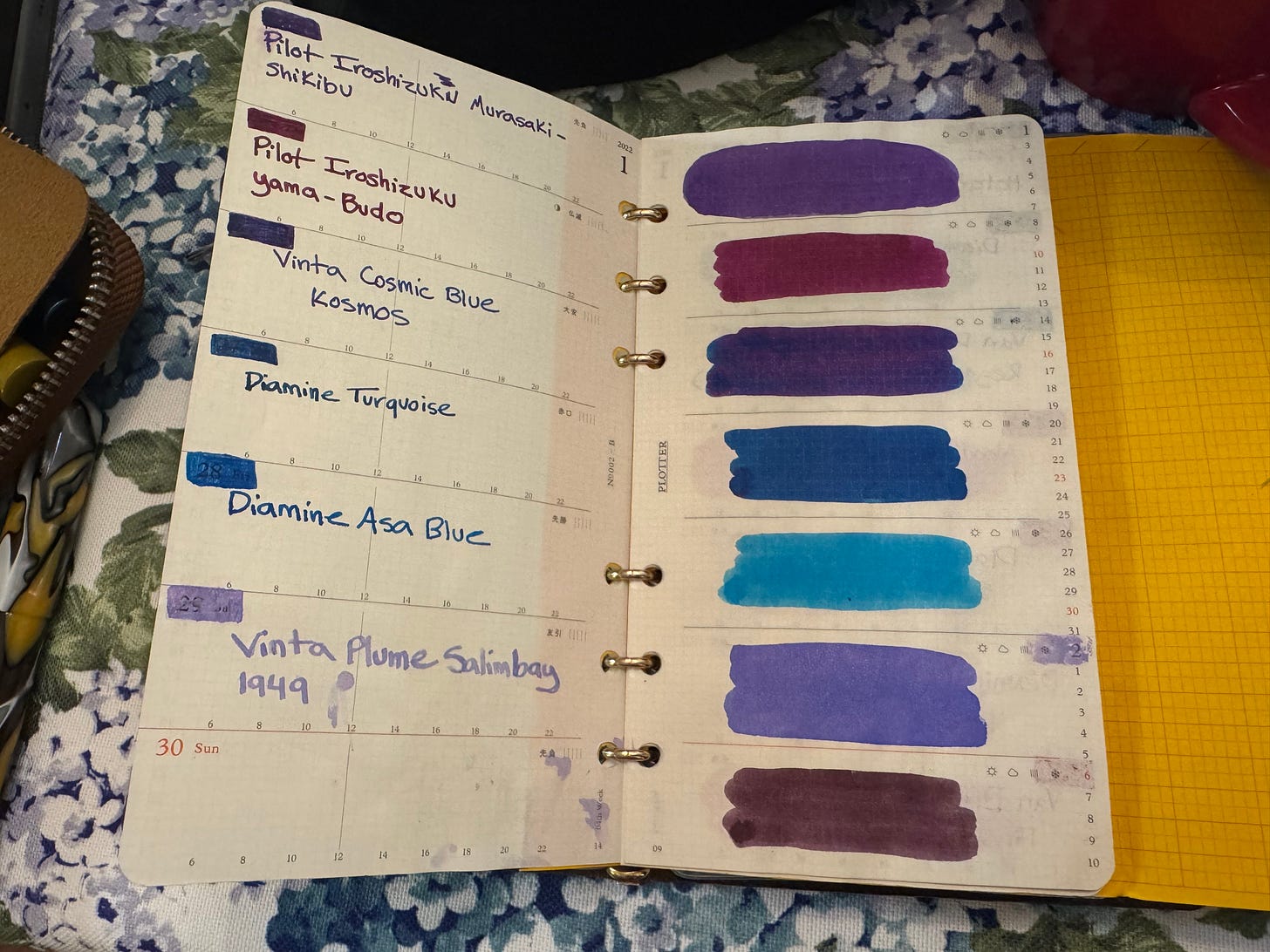In the midst of the confusing cyber world we live in, many people have turned to pocket notebook systems to keep them from social media doomscrolling. The irony, of course, is that the internet has been good to the analog community, fueling desire for pretty notebooks and stationery. But I think a lot of good can come from turning people back to pocket notebooks and pens. If the internet can inspire people to have hobbies away from the internet and learn to use social media moderately, then it’s a win for me.
A few years ago I discovered Plotter, the Japanese ring bound system that has a ton of customizable options. It’s like the old Filofaxes but much smaller. You can’t go into this thinking you can stuff every aspect of your life into it like a Filofax. You have to consciously decide what you need in this present moment in your notebook. That may stress people out. It certainly stressed me out at the beginning. Paper in, paper out.
You have to think about this notebook in a systematic approach. It’s not just a stack of paper glued together in a book. It’s a notebook cover that allows you to implement different sections, folders, and dividers for specific reasons. It’s like in school when your teachers made you have three-ring binders (are those required anymore?) with specific section dividers. But in a Plotter system, you have to determine what those sections are used for. And it took me a while to figure out what sections of my life would be important for me to divide. Maybe that’s why analog systems are popular today—it’s a physical manifestation of what you think is important in life.
Plotter provides accessories, such as paper pads, folders, pouches, and section dividers, to help you create your own flexible system. Unfortunately, the covers are expensive. But if you didn’t want to throw down the money for one of theirs, the accessories are reasonable enough to purchase for an alternative cover. My specific cover is called the “bible size,” which is what we called “personal size” in the west.
But I don’t want to focus so much on what I’m using but how I’m using it. I don’t want this to turn into some type of popular influencer content where I’m trying to sell an expensive notebook system. What fascinates me is not the brand but the systematic approach to journaling and how analog tools can help us discover what’s important to us in ways digital systems can’t. It took me a long time to discover what my system looks like, but it’s slowly coming to fruition to reflect who I am in my mid-30s.
My spiritual EDC system
I use my Bible-size Plotter for personal and spiritual reflection. It’s nice to have a physical manifestation of components in my life that help me focus throughout the day. Due to its size, I call this my “Spiritual EDC (every day carry) System.”
The first part of my system is a zipper pouch, which holds holy cards, a Padre Pio coin (randomly given to me by someone at Starbucks after a conversation. He didn’t know Padre Pio was my confirmation saint), and a green scapular, because I need all the help I can get for my conversion. The back of the zipper pouch holds my business cards and a Field Notes pocket notebook with specific chaplet prayers that I can’t remember.
After the pouch, the planner is the first section of the notebook. Right before the planning pages is a note I wrote on the components of the First Saturday Devotion from Our Lady of Fatima. I decided to start this devotion a few months ago, and is what I ground myself with throughout the year. Having this note at the beginning of the planner section reflects that truth about my goal.
The monthly planner section doesn’t include any work-related tasks or meetings, just personal and spiritual items to pay attention to.
The cool thing about a flexible binder system is you can move pages around as needed. Some users like to place individual note pages between the monthly spread pages. I need to spreads clean, though to see the full month. So any notes for the month go behind the current monthly spread. For this area, I have a note page with questions that my spiritual director gives me to reflect on before our monthly meetings.
The next section contains brainstorming notes that pertain to my business and a personal to-do list. Right now, I mostly have sections on my business plan and online store layouts.
Last, I use the Project Manager folders as an archive of sorts. The first folder holds swatches from my inks. It’s a nice reference to have to quickly see which inks I have and what would go well with my pens. The other Project Manager folder holds small journal entries I’ve written at Mass and the Adoration Chapel. It’s important to have space to quickly write out prayers and thoughts on my heart. I like placing them in the folder in the back because it’s not easily seen the first time you open the notebook.
Overall I’m pleased with the system, even if it is a bit small. I think you could create something much less expensive with more room. But if you have the means, the Plotter is an excellent system to help organize your life. My goal is not to pressure you to buy a Plotter, but to investigate your own needs and create your own external analog system that reflects who you are, what’s important to you, and what you need to accomplish. We can all do this on our phones, but I’ve never been able to fully replicate the ease of jotting thoughts down on paper.
I’d love to hear what you use if you have an analog system.




